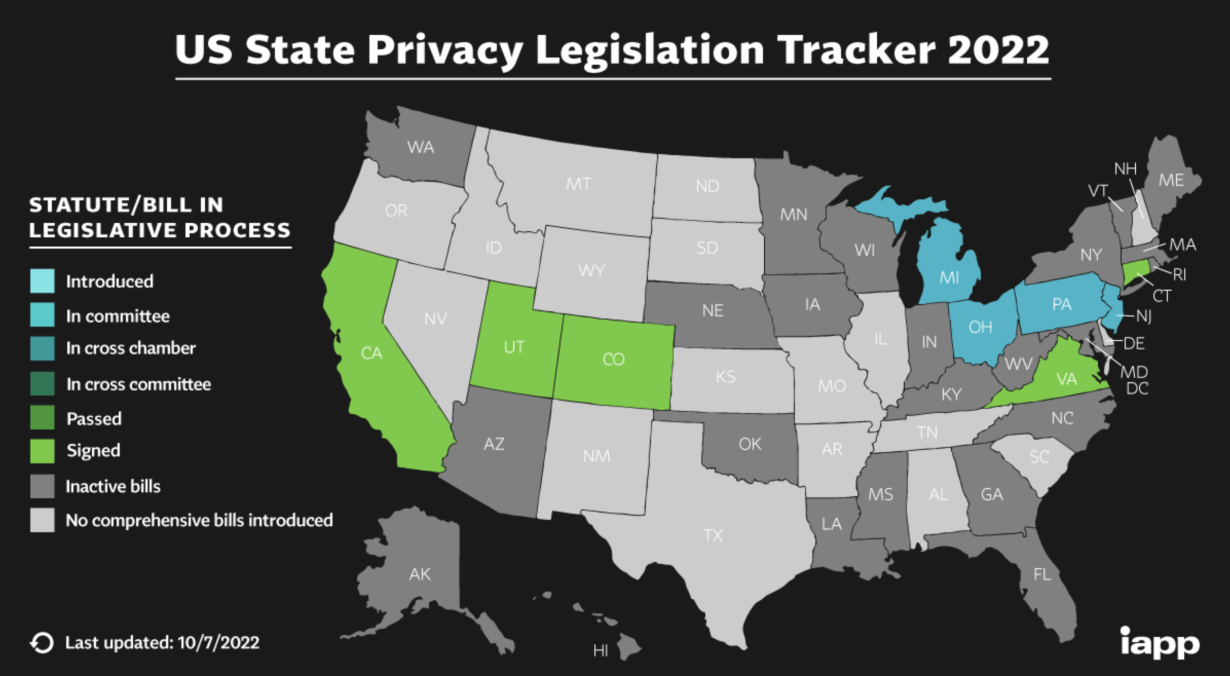Marketing is constantly changing, so when we decided to attend The Brief: A Summit Presented by Marketing Brew, we wanted to make sure to share what we learned with anyone who didn’t get the chance to go in person.
We got the chance to hear from some of the world’s most recognized brands and influential marketers. From brand partnerships to connecting with Gen Z, here are our five biggest takeaways from Marketing Brew’s Summit.
1) Relevant brand partnerships are key
Consumers are smart, and they know when they’re being pandered to or if something reads as inauthentic. Partnerships with creators and influencers are a growing part of a smart media arsenal, but you need to make sure those partners are aligned with your brand’s values and what your customers care about.
The presentation from McDonald’s highlighted their partnerships with Travis Scott, BTS, and Saweetie as a great example of what a strong partnership brings to the table. Each meal embodied the idea that everyone has their unique order; at the same time, McDonald’s could play on fans’ knowledge of each celebrity while offering the price and quality everyday consumers are used to.
Choosing the right partner gives your brand access to not just the creator’s audience but also their credibility. One of the big takeaways from McDonald’s was not to be afraid: to fail, to be funny, to try something new that’s outside of your brand’s comfort zone. You won’t know if it works until you put it out in the world.
For maximum impact, make sure you’re really collaborating with a potential partner, not just contracting out with them to fulfill a fully baked idea you already have in hand. That’s the only way to make something that feels authentic because it gives both sides the chance to engage their creativity and generate new ideas.
2) Creativity is an important part of self-expression and self-exploration
Because so many brands are leaning into the idea of authenticity, it’s easy to lose sight of what that actually means. In fact, Vans, the iconic skater apparel brand, revealed in their session that they have one rule when it comes to marketing: don’t use the word “authenticity.”
The Vans team looked back into its history to define the brand: Vans became a skate brand in the 70s because they paid attention to communities that other brands ignored and were recognized and adopted by the skaters. Vans was able to carve out an unapologetic identity that was embraced by and became an icon of the community itself.
@vans The first full-length edit from #LizzieArmanto in nearly five years is here! Watch “Onward” now at vans.com/lizzie #Vans #Skateboarding ♬ original sound – Vans
The Vans team set out a critical question at the heart of the trend toward “authentic creative” that every brand needs to answer: what part of creativity do you want to own as a brand, self expression or self exploration?
The act of creating, or self expression, is no longer the main focus for consumers. They want to use creativity for self exploration, to figure out who they are as they seek internal validation. Brand creative needs to be a mirror for your audience, so they can see if you can do it, they can do it.
Most content doesn’t change the way consumers think because it doesn’t challenge anyone’s thinking—even if they find something funny or memorable. Belief-changing thoughts have to be delivered in a smart, catchy way if you want them to become a core memory and change the way someone else thinks. Essentially, the best campaigns are able to deliver new ideas that can break your brain in a good way.
3) Pay it forward for the next generation of marketers
It’s not enough to do great work; you should also look toward the future and what you can add to the equation for the marketers of tomorrow. Start by sharing what you already know, looking to learn how to make the industry a better place, and elevating other voices that deserve amplification.
Representation should be a big part of that equation. As Black Executive CMO Alliance (BECA) founder Jerri DeVard shared in her session, Black marketers are out there but agencies aren’t looking for them. Representation in marketing is not a supply problem—it’s a demand problem. And it needs to be addressed to ensure future generations are entering a more equitable, inclusive industry.
“We will send the elevator back down so that new riders emerge at their destination faster, smarter, and more confident. We’ll leverage our successes to bring more Black marketing professionals into the fold through mentorship, internship, scholarship and sponsorship. We’ll strengthen the pipeline of current and future Black talent, instilling greater pride and determination to succeed.”
To build a more representative organization, you need to make a concerted effort to develop a pipeline for hiring that is full of diverse talent. Otherwise, you’re just stating an intention without building a path to make it actually happen.
Hiring isn’t the only arena where diverse voices experience challenges. It’s also important to remember that failure is a privilege for some employees but not others. There’s more pressure on marketers from underrepresented communities to never fail or make mistakes. That’s exacerbated by fewer opportunities to move up the ranks or get promotions.
Cultivate an environment where everyone is empowered to take risks and proceed with confidence by making bold moves to advance DEI in a meaningful way, like allowing executive leadership to join boards to drive change across the industry as a whole.
Accountability is crucial; in 2020, many brands committed to diversifying. In fact, $80 billion was pledged to DEI during the George Floyd protests. When BECA went back to check that math and look at the results, the equation didn’t add up. Ask whether your organization actually followed through on those commitments. It’s up to both the employees in that organization and consumers to hold businesses and leaders to their promises.
That can start by developing and supporting environments like ERGs where marketers from diverse backgrounds can thrive, network, and support each other. Your organization needs to care enough to make it happen or real, lasting change won’t be possible.
4) Data privacy is only getting more complicated
One of the major themes of the conference was around the ever-present question of data privacy standards and regulations. Several shifts in the data privacy landscape are coming that are sure to cause pain for marketers due to new regulations, specifically targeting key opt-out rights.
CPRA was supposed to go into effect on January 1st but has now been delayed until April. California’s privacy laws will be the toughest in the nation; CPRA is set to affect three different types of opt-outs: customer profiling, targeted advertising, and sharing first-party consumer data for monetary or other valuable considerations, significantly impacting the data available to marketers. That data can also only be used for purposes within reasonable consumer expectations or it will require additional opt in.

Source: IAPP
To survive the shift, you need to build relationships with your customers and be transparent about how you’re using their data to establish trust and demonstrate why you need their data. Review all contracts with partners and tech platforms to ensure data usage and sharing are compliant to keep your business protected.
5) Let Gen Z take the lead in your media strategy
According to American Eagle, you can’t stay connected if you don’t listen to Gen Z. From a physical and digital standpoint, Gen Z is social and looking for authenticity from the brands they choose to interact with.
So how does American Eagle interact with their audiences? By having a ton of fun across social while staying true to their brand. Some of the best content from American Eagle comes from creators that love their brand and happily showcase their hauls across social media platforms.
@americaneagle Traveling this season? ✈️🚉🚗 Make sure you have these essentials (now 30% off @ the 🔗 in our prof) 🤌 thx for the inspo @brooke ♬ not over you – ❤️🩹
Keeping things fun and creative on social platforms like TikTok and BeReal is an easy way to reach Gen Z on their level. Those younger platforms tend to feel much more organic and less curated than millennial-focused platforms like Instagram.
To make those platforms work for you, you need to let go of some of the strict rules you have around your brand and take some risks. They don’t want to see super branded or curated lifestyle content. Instead, they want to see content that feels like real life. The easiest path to success? Partner with creators who know these platforms and have experience creating successful content expressly for the platform.
Multi-million dollar polished content doesn’t perform as well as low-fi content on these creator-focused channels. An impeccably curated aesthetic just doesn’t resonate with Gen Z, so don’t waste your dollars if you want to connect and convert that cohort.







Responses